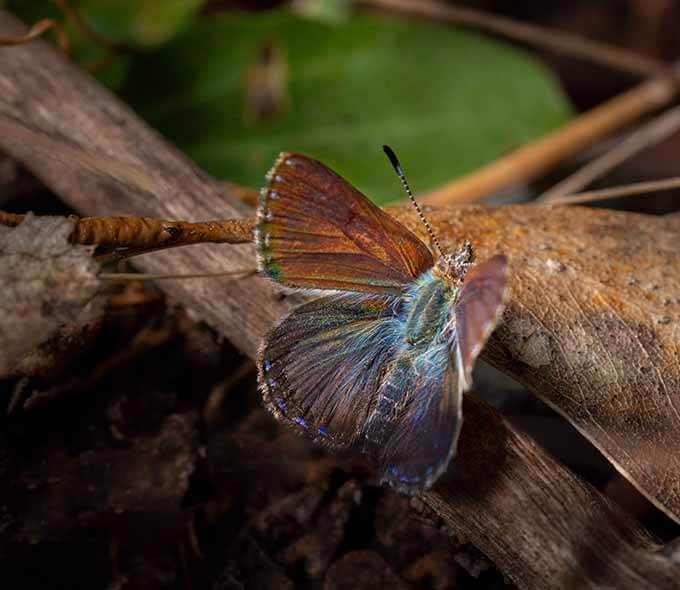Antennae on for the flutter of tiny purple wings
Central Tablelands residents are being asked to become citizen scientists to help researchers monitor one of Australia's rarest butterflies.
The endangered purple copper butterfly is found around Bathurst, Oberon and Lithgow and will be active when the butterfly flying season begins in late August and finishes in October.
The tiny butterfly's stunning iridescent purple-blue wings make it easier to spot while in flight on sunny, calm spring days.
The butterfly's picky eating habits give more clues on where butterfly hunters should look, as the purple copper only lives on and around native blackthorn, the favourite food of the caterpillars.
Anyone who spots the butterflies is asked to record their sightings to help scientists understand when and where the species occurs.
Scientists are especially keen to uncover more populations as the purple copper is currently only known in a small number of areas within the Central Tablelands.
Citizen scientists can report their sightings to the Counting Coppers project, which is run by Butterflies Australia and the NSW Government's Saving our Species program.
The free Butterflies Australia app can be downloaded from the Apple app store.
Sightings can also be reported via email to [email protected]
Quotes attributable to Alison Cowie, Threatened Species Officer, NSW Department of Climate Change, Energy, the Environment and Water
With the help of citizen scientists, Saving our Species will help build a better understanding of when and where this species occurs and may even uncover more populations of this endangered butterfly.
In 2021 a butterfly spotted at Namadji National Park in the ACT was thought to be a purple copper butterfly, which would have represented an expansion of the species' range. However it has now been confirmed that the butterfly was a new species, called Paralucia crosbyi.
This means the purple copper butterfly is still only known from sites within the Bathurst, Oberon and Lithgow areas, although we are hopeful of finding new populations through the Counting Coppers project.
The purple copper butterfly is not only one of our rarest butterflies, it is also a fascinating species that has a mutually beneficial relationship with a native ant.
The caterpillars of purple copper butterflies live on native blackthorn, and as they grow they are protected from predators by this ant. The ants are rewarded for their work with a sweet honeydew secreted from glands on the caterpillars' backs. This important relationship means that purple copper butterflies need both native blackthorn and the ant species to be able to thrive and reproduce.
Butterfly monitoring
- Slowly walk around the butterfly's preferred habitat of native blackthorn
- Butterflies are most active on calm, sunny days between 10am and 2pm
- When butterflies are disturbed, they fly for a few seconds
- They orientate their wings in the direction of the sun when they land
- Please include the date, time, location and any photographs when reporting a sighting.
Images for media: Dropbox
